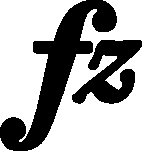



|
b. 119-121
|
composition: Op. 44, Polonaise in F♯ minor
..
In the main text we suggest accents as written down in EE. This solution combines the most certain elements of the versions of GE1 and FE:
category imprint: Graphic ambiguousness; Differences between sources issues: Long accents , Inaccuracies in GE , Inaccuracies in FE , Placement of markings |
||||||||||
|
b. 119-122
|
composition: Op. 44, Polonaise in F♯ minor
..
In the main text we do not include the cautionary naturals present in FE (→EE) next to certain F and f quavers, since we are convinced that the F1-F octave at the beginning of each of the discussed bars dissipates any doubts as to the sound of those notes. category imprint: Differences between sources; Editorial revisions issues: Cautionary accidentals |
||||||||||
|
b. 119
|
composition: Op. 23, Ballade in G minor
..
In the main text, we add a cautionary category imprint: Interpretations within context; Editorial revisions |
||||||||||
|
b. 119
|
composition: Op. 23, Ballade in G minor
..
According to us, it is highly likely that category imprint: Differences between sources issues: Errors in FE |
||||||||||
|
b. 119
|
composition: Op. 2, Variations, complete
..
There is only one category imprint: Interpretations within context; Differences between sources issues: Omissions to cancel alteration , GE revisions , Errors of A , Accidental below/above the note , Inaccuracies in A |


 over the mordent. Interestingly enough, in many later editions of the Ballade, the editors added a
over the mordent. Interestingly enough, in many later editions of the Ballade, the editors added a  here. However, in spite of the fact that the key prevailing in the previous fragment is A major, which would suggest g
here. However, in spite of the fact that the key prevailing in the previous fragment is A major, which would suggest g 2, nothing points to Chopin's oversight. Bars 118-119 are based on an F
2, nothing points to Chopin's oversight. Bars 118-119 are based on an F in
in